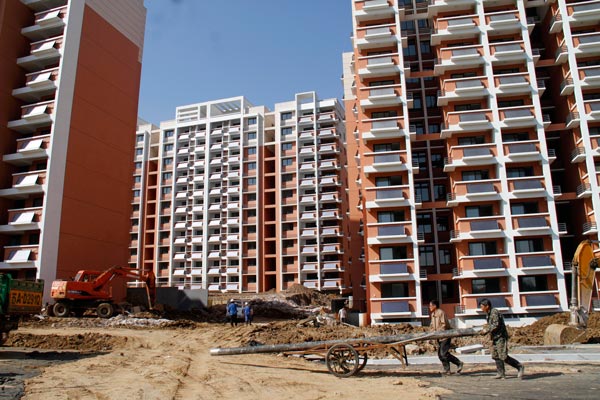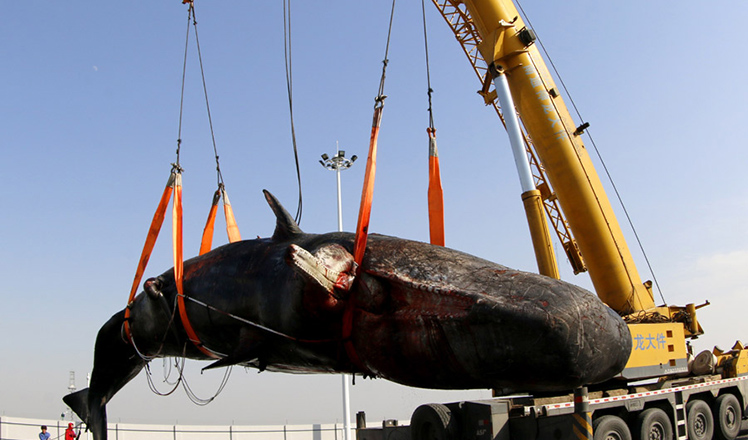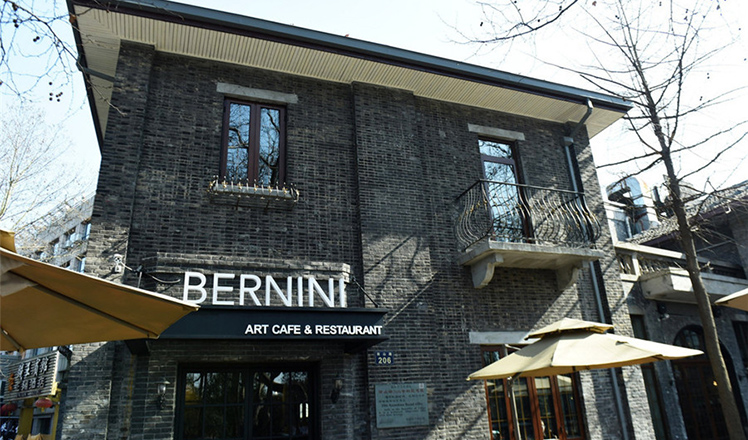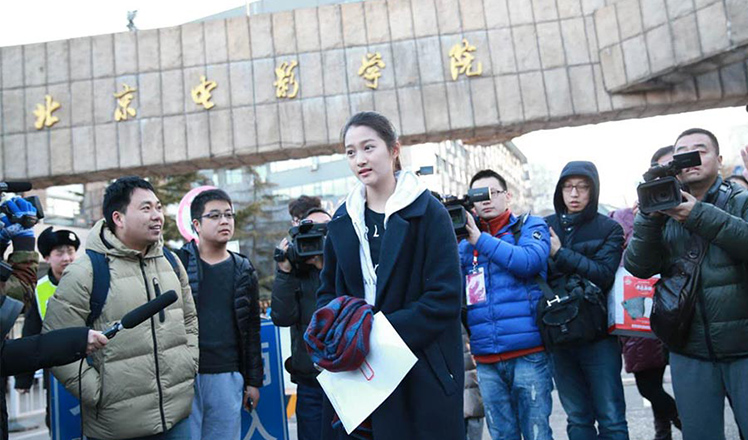Extending VAT reform can save $93b in 2016
Updated: 2016-02-17 13:51
By Zheng Yangpeng(chinadaily.com.cn)
|
||||||||
 |
|
A property construction site in Nanjing, capital of Jiangsu province. [Photo/China Daily] |
Shandong Gaishi Group, which runs the province's largest road cargo network, deals with over 12,000 vehicle shipment daily, with a total volume of 50,000 metric tons. To add its capacity, it last year borrowed loans that would require an annual interest payment of 30 million yuan($4.6 million). Under China's value-added tax reform, which was to replace business tax in the service sectors with VAT to avoid repeated taxation, Gaishi's interest payment eligible for deduction alone would save the company 1.7 million yuan of tax payment.
"The 1.7 million yuan could be used to buy 10 vehicles to expand our capacity. Without the VAT tax reform, we would have to think again whether to borrow," said Chai Shanshan, a tax planning director of the group.
The case illustrates the economic rationale behind policymakers' effort to cut corporate tax: less tax burden would free up more enterprises' earnings, thus inspire them to use that for capital expenditure. The rise in investment would offer a larger base to tax.
"It is a trade-off between short-term tax losses and long-term gain," said Liu Shangxi, director of the Fiscal Sciences Research Institute under Ministry of Finance. "In the long run it is also beneficial to the foster of new economic engines, upgrade of industries and consumption upgrading."
For now, the most talked about, and most feasible tax cut plan, is the VAT reform. Starting in 2012, the reform has so far expanded to all service sectors, such as transportation and telecommunication, which had in total saved 593.9 billion yuan of tax until the end of Nov, according to State Administration of Taxation (SAT).
In 2016, the reform is expected to expand to the four remaining bulwarks: property, construction, finance, and consumer services. If achieved, analysts said, it would be a remarkable progress. Business tax derived from the four sectors accounted for over two thirds of total business tax revenue. If replaced by VAT, it is estimated to reduce 396.9 billion yuan of tax on enterprises in these sectors, according to a report by People's Daily. Adding VAT reform in other sectors, 613.1 billion yuan would be saved in 2016.
What's more, the reform in the four sectors would bring benefits to their downstream industries, because VAT levied in these sectors would make downstream businesses more easier to get invoices to get deductions, said Hu Yijian, a tax professor at Shanghai University of Finance and Economics.
Economists also argued that the VAT rate should be simplified to lower the tax. Currently there are five VAT rate: 17,13,11,6 and 3 percent. Businesses are subjected to different rate according to their nature of business. China International Capital Corp suggested the highest rate could be lowered to 15 percent for manufacturing. If that's the case, 300 billion yuan tax would be saved.
A top meeting in December has proposed various ways to lower business cost, including "lowering VAT rate for manufacturing sector". The meeting did not specify how the tax rate would be lowered.
Besides VAT reform, China in the last year has also implemented various measures to cut tax for small and micro firms. In August the State Council decided to further eased the threshold of eligible firms to enjoy a 50 percent reduction in their corporate income tax. It also extended the exemption of VAT and business tax for small businesses with less than 30,000 yuan in monthly sales.
These policies have saved small and micro firms nearly 100 billion yuan of tax. Tax cut on high-tech companies relieved another 140 billion yuan of tax, according to SAT.
- Paid menstrual leave provokes controversy in China
- MIT establishes supply chain education center in China
- One of the two dead sperm whales in East China salvaged
- 20,000 yuan eaten by ants gives artist a frame for inspiration
- Chinese military sets up corruption hotline
- Foreigners working in Beijing can now buy apartments immediately
- 'Grim Sleeper' murder trial begins six years after arrest
- Cameron defends EU deal as lawmakers offer no guarantees
- Sarkozy placed under investigation in campaign funding probe
- Moscow dismisses accusation of Russia bombing Syrian hospitals
- 2016 Westminster Kennel Club Dog Show held in New York
- Pakistan confirms participation in Saudi-led military drills

 One of the two dead sperm whales in East China salvaged
One of the two dead sperm whales in East China salvaged
 Armless student pursues painting dream
Armless student pursues painting dream
 62-year-old folk artist carries on firecracker dragon lantern
62-year-old folk artist carries on firecracker dragon lantern
 Bridge expert's former home converted to restaurant
Bridge expert's former home converted to restaurant
 Excitement, charm and grace: Chinese New Year in UK
Excitement, charm and grace: Chinese New Year in UK
 Taylor Swift wins Album of the Year at Grammys
Taylor Swift wins Album of the Year at Grammys
 Stars spotted at film academy exam in China
Stars spotted at film academy exam in China
 Record number of Chinese travel abroad for Spring Festival
Record number of Chinese travel abroad for Spring Festival
Most Viewed
Editor's Picks

|

|

|

|

|

|
Today's Top News
Will US-ASEAN meeting be good for region?
Accentuate the positive in Sino-US relations
Dangerous games on peninsula will have no winner
National Art Museum showing 400 puppets in new exhibition
Finest Chinese porcelains expected to fetch over $28 million
Monkey portraits by Chinese ink painting masters
Beijing's movie fans in for new experience
Obama to deliver final State of the Union speech
US Weekly

|

|







